At 5pm PST yesterday afternoon, a series of papers from the Kepler team were released on astro-ph. These include the Borucki et al. overview of the full data set from the first four months of observation, as well as articles that delve more deeply into the results. It’s hard to know quite where to begin. In a field that’s seen more than its share of hype and hyperbole, these papers and the accompanying data represent a watershed. The most interesting facets of the galactic planetary census can now be downloaded onto your hard drive — either in the form of raw light curves or as a ready-mixed compilation of over a thousand planets. I guess it’s time to stay up late…
Earlier this year, while putting together my slides for a UC Berkeley astronomy colloquium, I got the list of asteroid discovery dates from the Minor Planet Center. Back in 1801, the discovery of Ceres was every bit as big a deal as the discovery of the first extrasolar planets, so I thought it would be interesting to compare the progression of the asteroid discoveries with that of the extrasolar planets.
The first four asteroids, 1 Ceres, 2 Pallas, 3 Juno, and 4 Vesta were all discovered within a few years of each other, and then there was a surprisingly long gap until the discovery of 5 Astraea in 1845. Here, (courtesy of the Wikipedia), are the relative sizes of the first 10 asteroids in comparison to the size of Earth’s Moon:
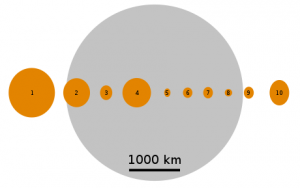
Starting in 1847, asteroid detections began ramping up, and by 1857, there were enough examples for Daniel Kirkwood to notice gaps in the distribution which he (correctly) suspected were due to orbital commensurabilities with Jupiter.
Source: D. Kirkwood, 1867 AAAS Proceedings
With the extrasolar planets, the shape of the discovery histogram is strikingly similar. The pace of events, however, has unfolded five times faster, with the gap between the discovery of HD 114762 b and 51 Peg b being followed by a steady ramp-up in the pace of confirmed detections. There are a lot more astronomers now than there were in the 1800s.
In my Berkeley talk, I remarked that if things were to continue at the 5x faster rate, then 2011 should see the first discovery of a pair of planets in a Trojan configuration, echoing the discovery of the first Trojan asteroid, 588 Achilles, by Max Wolf of the Heidelberg Observatory in 1906.
Amazingly, it looks as if a pair of co-orbital “Trojan” planets has been found by Kepler. As detailed in the Lissauer, Ragozzine, Fabrycky et al. arXiv1102.0543 paper, The KOI 730 system contains transiting candidates with periods of 7.38, 9.84, 9.85, and 14.78 days — fully consistent with a 3:4:4:6 resonance:
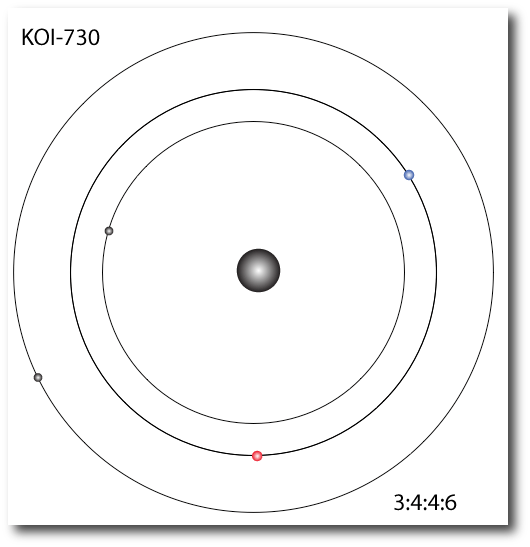
The two middle planets (red and blue) in the configuration are participating in what are likely to be wide tadpole oscillations with respect to the equilateral equilibrium, like Hector chasing Patroclus around inside the Trojan Horse.
The above figures are adapted from a paper that John Chambers and I wrote in 2002 that explores the different flavors of one-to-one resonance that might exist among the extrasolar planets. I’m eager to sift the Kepler data to search for examples of the one-to-one “eccentric resonance” in which two planets share an orbital period and toss their orbital angular momentum back and forth like a hot potato:
It is mesmerizing to bring the KOI-730 candidates up in the systemic console, and watch the stability integration (try integrating for 500 years with an output frequency of 0.01 years). If one interprets the radial velocity wave-form as a audible signal, the system is simultaneously playing a fourth and an octave, with the longer-period libration distinctly heard as an unsteady vibrato.
A 10-second .WAV file (created with the Systemic Console) is here. This should play in your browser when the link is clicked.
It’s also interesting to note that the first clear picture of an asteroid was taken in 1992 by the Galileo probe, which passed close to 951 Gaspra on its way to Jupiter.
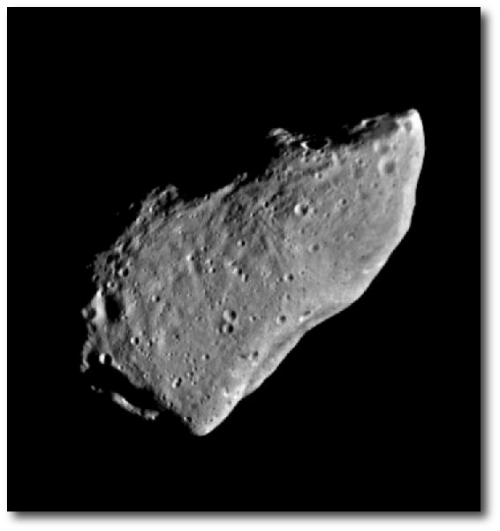
Pushing the five-fold increase in pace to its natural conclusion, means you should be sure to check this site in 2028…



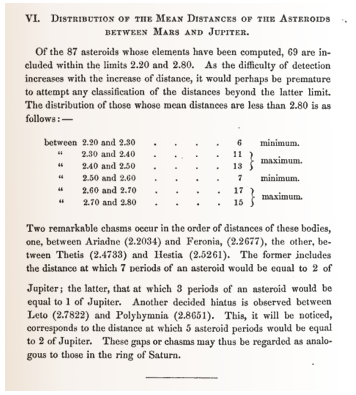
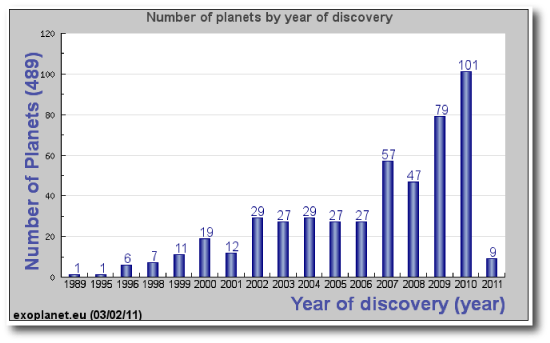
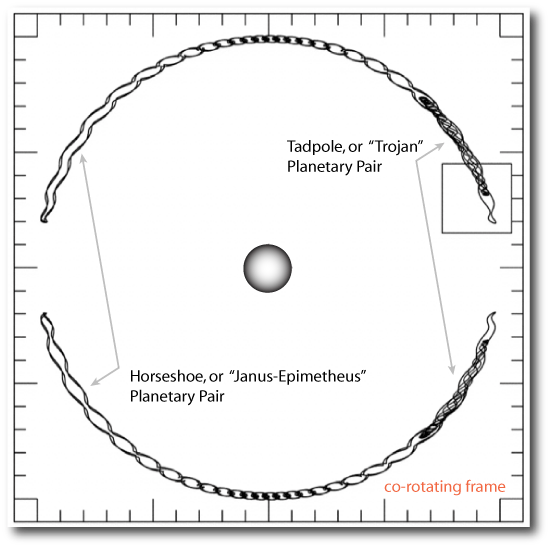
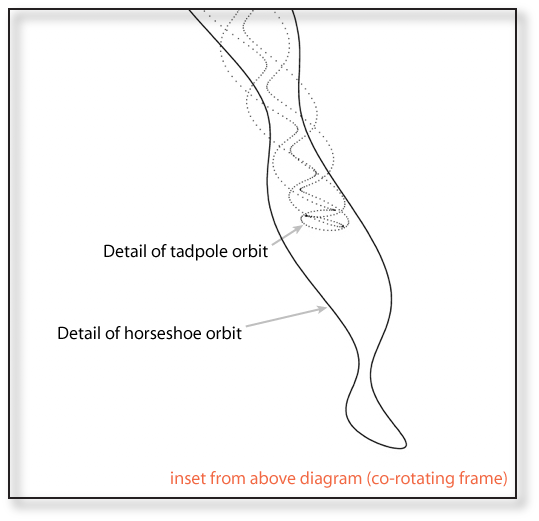
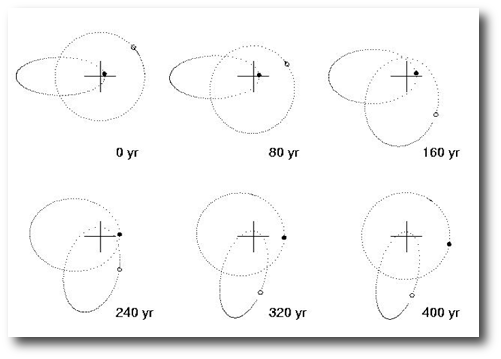

Check out my multiplanet video, a Kepler Orrery:
http://www.youtube.com/watch?v=aFF4LdYr3l8
@Daniel Fabrycky
I’m still refining the video. Here’s the current version, set to an appropriate score…
http://www.youtube.com/watch?v=qRJ30fkyiU4
and since the small planets are indistinguishable there, I made a version highlighting them:
http://www.youtube.com/watch?v=wYLwoPTIQx4
Not just 730, but 500, 961, and several others, are absolutely amazing, if they are real planetary systems.
Pingback: Blog de Astronomia do astroPT » Kepler Descobre “Planetas Troianos”
Well, we won’t have exo-planet images as good as that for Gaspra by 2028, obviously. My prediction is that we’ll have good exo-planet spectroscopy by then, even of planets in their stars’ habitable zones. It should take NASA about that long to fund New Worlds Explorer, given how long it took them to fund Kepler.
Pingback: Love in the time of Kepler « A Rain of Photons
Alas, it looks that the Trojan pair is “going away.” Here’s the current situation.
Thanks for publicizing the Kepler Orrery; it’s doing well in # of hits and “likes” on youtube, and is now a high res version is available for download on Kepler’s site.